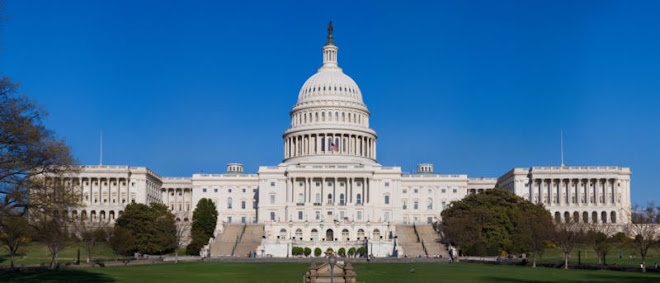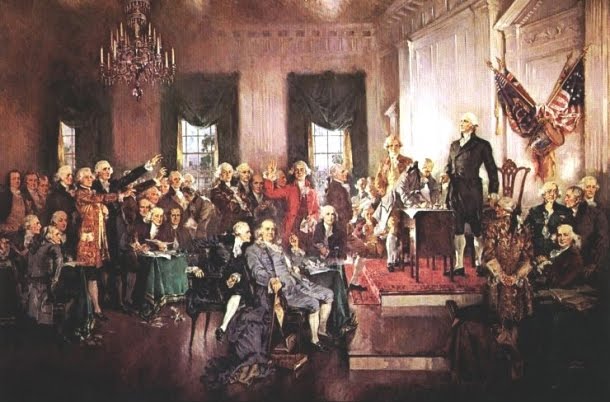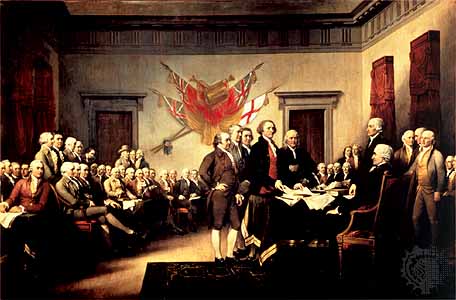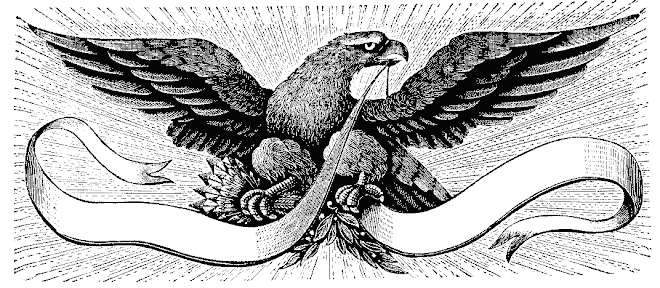From The American Thinker:
May 29, 2010
How Did We Get There?
By Dana Ferrell
How did we get there? That is the question posed by Senator Tom Coburn (R-OK) to Supreme Court Justice Nominee Sonia Sotomayor during her confirmation hearing. The "there" Senator Coburn was asking about is the situation where the individual's right to bear arms is explicit in the Constitution yet unsettled in law, while a woman's right to privacy (to an abortion), not mentioned at all in the Constitution, is settled in law. Thus, the perfectly reasonable question, "How did we get there?"
The problem we face is that there are a lot of "theres" out there.
From an early age, we Americans are taught that ours is a government with limited powers designed to protect the liberty of the individual from powerful individuals, special interest groups, and tyranny of the majority imposed by government itself -- that the brilliance of our founders was in crafting a constitution that enumerates the powers of the federal government and that any power not specifically given to that government cannot be usurped from the states or the people. Today, it is estimated that two-thirds to three-fourths of federal government expenditures do not have a foundation in its enumerated powers, and nearly all of the regulatory agencies are without any Constitutional foundation. How did we get there?
Since 1789, forty-three presidents have taken an oath "to preserve, protect, and defend the Constitution of the United States." Since 1789, every Senator and Representative, every member of the several state legislatures, every executive and judicial officer, whether of the United States or of the several States, was or is bound by an oath or affirmation to support the Constitution of the United States. Still, we have gone from a government intended to be small and unintrusive in our economy to one that is so bloated that its direct expenditures account for 25 percent of total output -- but that is only a fraction of the true cost of government.
There is not a single product out there that is not touched by some Bureau, Department, Commission, or Agency of the Federal Government -- all increasing the cost of the goods and services we purchase. These indirect costs are not accounted for in the federal budget. If we knew the full cost of the federal government and could readily perceive its full impact on our lives, a revolt would ensue almost immediately. Just the direct costs of government are growing to unimaginable levels. Maybe that is one reason the Congress is not even attempting to write a budget this year. How did we get there?
The one-sentence Preamble to our Constitution tells us a great deal about why those gentlemen were assembled in Philadelphia:
We the People of the United States, in Order to form a more perfect Union, establish Justice, insure domestic Tranquility, provide for the common defence, promote the general Welfare, and secure the Blessings of Liberty to ourselves and our Posterity, do ordain and establish this Constitution for the United States of America.
One does not have to stretch his imagination very far to believe that the first five items were necessary to secure the sixth and that it was securing the "Blessings of Liberty" for them and for us that was their true objective. The fact that they viewed liberty and the many benefits that come with it a blessing from God suggests liberty to be the primary goal of the new form of government they were creating. Their concept of liberty was not simply freedom from foreign dominance or occupation. Their concept of liberty meant each individual being free to determine his own fate in every aspect of his own life. Today, we have a federal government that, in one way or another, influences, directs, and/or controls nearly every aspect of our lives. How did we get there?
Article IV, Section 1 of the Constitution states:
Full Faith and Credit shall be given in each State to the public Acts, Records, and judicial Proceedings of every other State. And the Congress may by general Laws prescribe the Manner in which such Acts, Records and Proceedings shall be proved, and the Effect thereof.
Yet, when the State of Arizona enacts a law following the process outlined in its constitution (with the approval of some 70 percent of Arizona residents), subdivisions of other States openly claim that they will seek to punish Arizona for its action. They pass ordinances in direct conflict with Article IV, Section 1. The president and Attorney General threaten action, not against those acting in violation of the Constitutional provision mentioned, but against Arizona, which acted constitutionally. The President of Mexico stands in the well of the House of Representatives condemns Arizona for its action, and half of the Congress gives him a standing ovation. How did we get there?
Activist judges? Yes, they played a role. Liberalism? Yes, it played a role. Cronyism and corruption? Yes, they too played a role. But the real enemy of our individual liberty; the entity that deserves the most blame for the great loss we have endured on the liberty front is: We the People of the United States. We have accepted the government handouts. We have not thrown out of office politicians who dole them out. We have reelected those who created new programs with no constitutional foundation to consume our taxes and our liberty. Fortunately, if we want our liberty back, We the People can reclaim it.
The Tea Party has made a start on the reclamation effort. It seems to recognize that every dollar spent by the federal government is extracted under threat of imprisonment from one of our fellow citizens. The journey back to liberty will be long, and it will be difficult. It will take time to return to the condition where a Ron Paul does not seem to be an extremist kook. Hopefully, we will reach the day when individual liberty returns to its original capacity. Then, the Statists can sit up and ask, "How did we get there?"
"Whensoever the General Government assumes undelegated powers, its acts are unauthoritative, void, and of no force."
- Thomas Jefferson










No comments:
Post a Comment